Don’t get me wrong. I love tiny things as much as the next person. But not all tiny things are created equal. And tiny disposable travel things are definitely not sustainable. Recycling centres won’t recycle plastic items smaller than a credit card so most travel sized items go straight to a landfill. Along with 91% of our plastic garbage. These tiny items are too small to go through sorting processes properly and end up clogging and jamming machinery instead. Instead, put together a zero waste travel kit that’ll get you through your travels and keep plastic out of our global landfills.
How Travel Sizes Hurt The Environment
It’s not just travel sized items that hurt the environment, any single use plastic container isn’t great for the planet. In Ontario alone, despite the blue box recycling program, over 1.5 billion plastic bottles still end up in landfills or somewhere in the environment every year. Probably in one of the Great Lakes where 80% of the litter is plastic. Plastic isn’t easily recycled as it is, it needs to be washed, sorted and shredded before being melted down to pellets for new products. Add in an extra component of tininess that plastic recycling machines aren’t designed to handle and you’ve got a jammed machine stopping production on your hands.
Unfortunately the small size of travel products that makes them so convenient also means they likely can’t be recycled. They’re too small to go through the machinery safely and end up causing more issues than good in the end. They can either cause a clog or fall through the cracks, contaminating other recycling and sending the whole batch to the landfill.
Travel sized items are an unnecessary use of plastic when you can buy the larger size and transfer some to a smaller container for travel. It’d save us from spending eight times more on the smaller products too. But our love of all things miniatures has us buying and throwing aways millions of these travel sized products every year. Around 100 million travel sized items are bought in the UK every year, adding up to 980 tonnes of plastic waste. Only two in five people end up recycling these products with the equivalent of two-and-a-half Boeing 747s ending up in landfills every year.
Creating A Zero Waste Travel Kit
1. Pack Your Usuals, But In A Different Container
Going on vacation isn’t the time to try something new because it’s travel sized only to have it fail, break or just end up useless. And a low-grade shampoo and conditioner isn’t going to help your already dry hair in a hot climate. This tip is obviously pretty easy if you’re already using zero waste products, you can just pop them in your bag and away you go. But even if you’re not, you probably already have reusable containers at home that you can transfer what you need to for your trip and bring the good stuff with you.
2. Use What You Have At Home
Chances are, you already have everything you need to pack a zero waste travel kit already at home, without having to go out and buy anything new. Check to see what small containers you have along with any products or items you can downside for a trip. That old lip balm tin could be great for your eye cream. Or that breath mint tin could hold a soap bar. Just make sure you wash your upcycled containers thoroughly before refilling.
3. Think Multi-Purpose
The trick to sustainability and traveling light is in multi-functional item selection. An overly complicated way of basically saying that an item needs to do at least two jobs or it can’t come. Like moisturiser with built in SPF or a pashmina, the swiss army knife of travel items, converting itself into a scarf, blanket, skirt, bag, picnic blanket, table cloth, eye mask and probably a hundred other things. The more multi-functional your travel kit, the lighter you can pack and fewer items end up in a landfill or floating around the planet for years.
Zero Waste Travel Kit Checklist
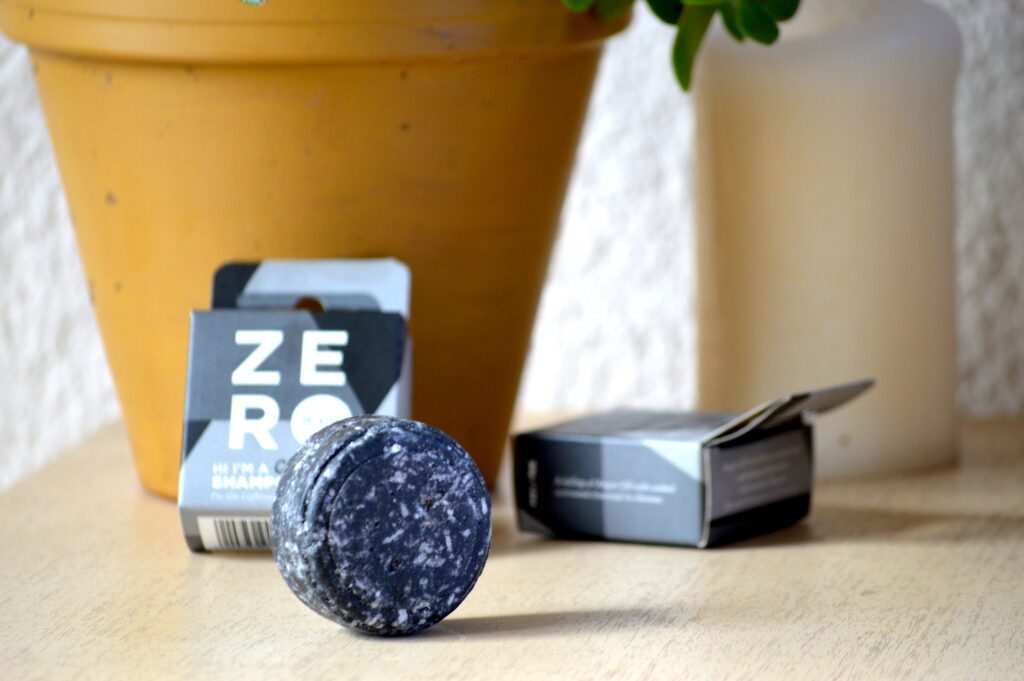
Shampoo Bar
Shampoo bars have come a long way in the last few years. Gone are the days when you could only find a shampoo bar at a natural foods market, and even then it was just glycerin and rose petals. Not that there’s anything wrong with those bars, but we can definitely find a broader range of shampoo bars on the market now. You can find them almost everywhere you see bottled shampoo. Switching to a bar instead of a bottle can save 744 plastic shampoo bottles per person from ending up in our landfills.
- Plantish
- Badger Balm
- Ethique Purple Shampoo
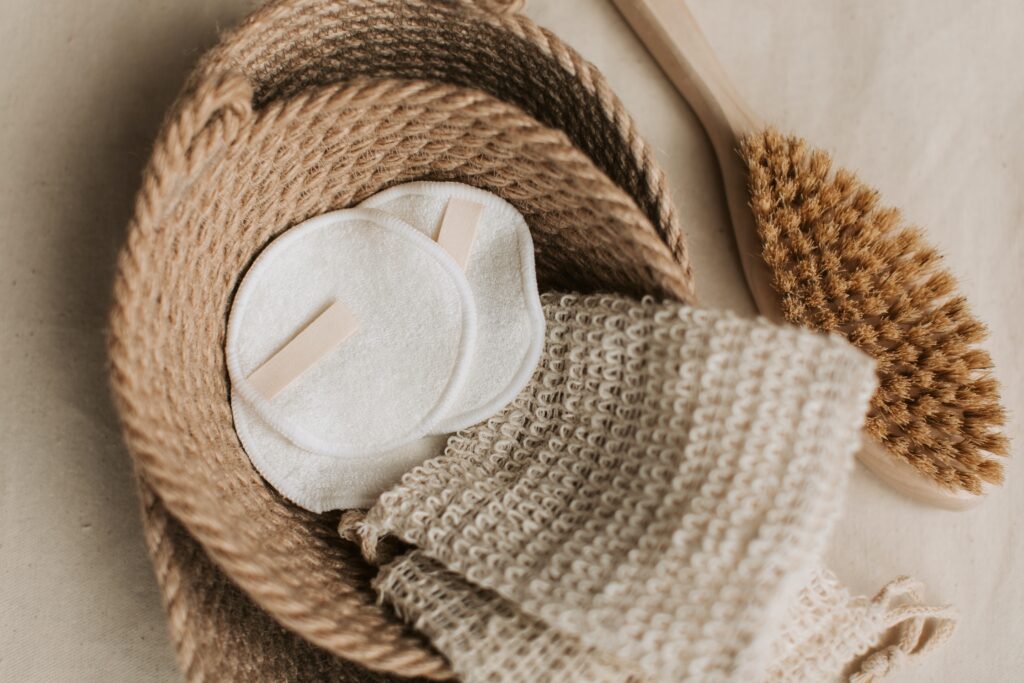
Washcloth
Washcloths are a multi versatile gem of a zero waste travel kit item. They can replace wipes, napkins, containers and obviously you can wash your face and body with them. They’re generally pretty affordable if you want to buy them but you can always upcycle a towel into multiple washcloths either. Washcloths help keep single-use wipes out of the environment where they can take up to 100 years to decompose. Even wipes marketed as compostable rarely meet conditions where they actually decompose and can cost cities thousands to unclog sewer systems. An estimated $250 million is spent every year in Canada alone unclogging blockages caused by wipes.
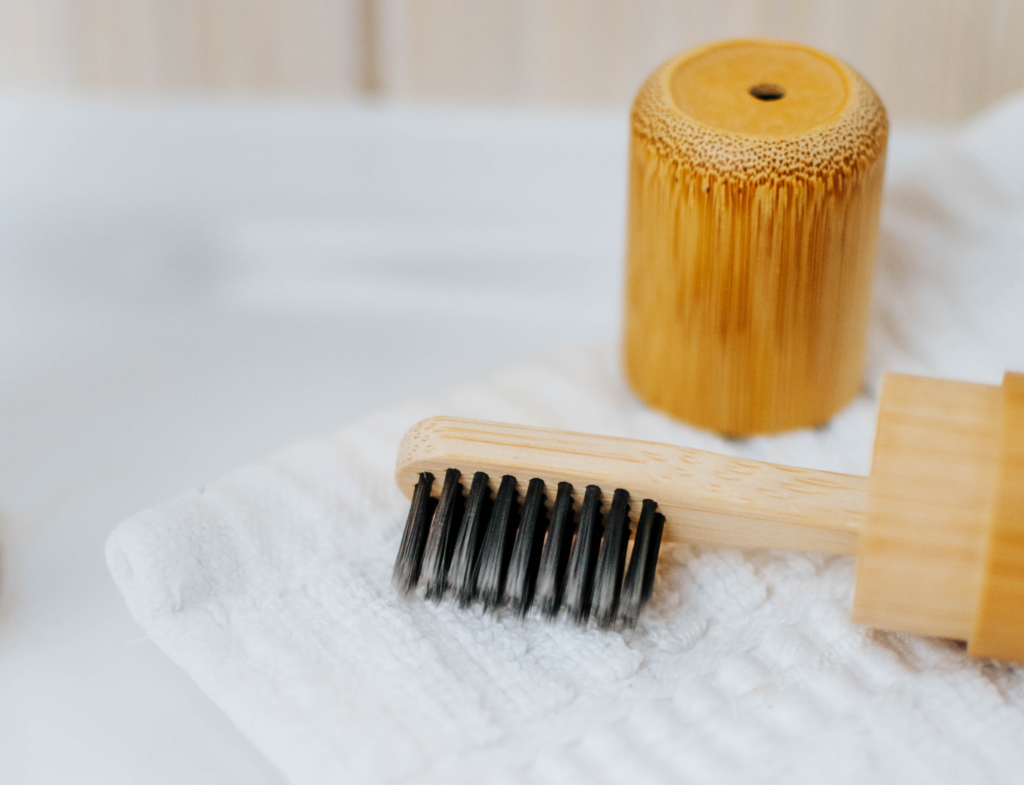
Sustainable Toothbrush and Toothpaste Tablets
One billion toothbrushes are thrown away every year in the US alone, amounting to 50 million pounds of waste. Unless you’re due a new toothbrush, you really don’t need to buy a new one for your travels. The same goes for your toothpaste. If you already use toothpaste tablets, then away you go. But if you use toothpaste in a tube you can always put some in a reusable container to bring with you instead of buying a tiny version.
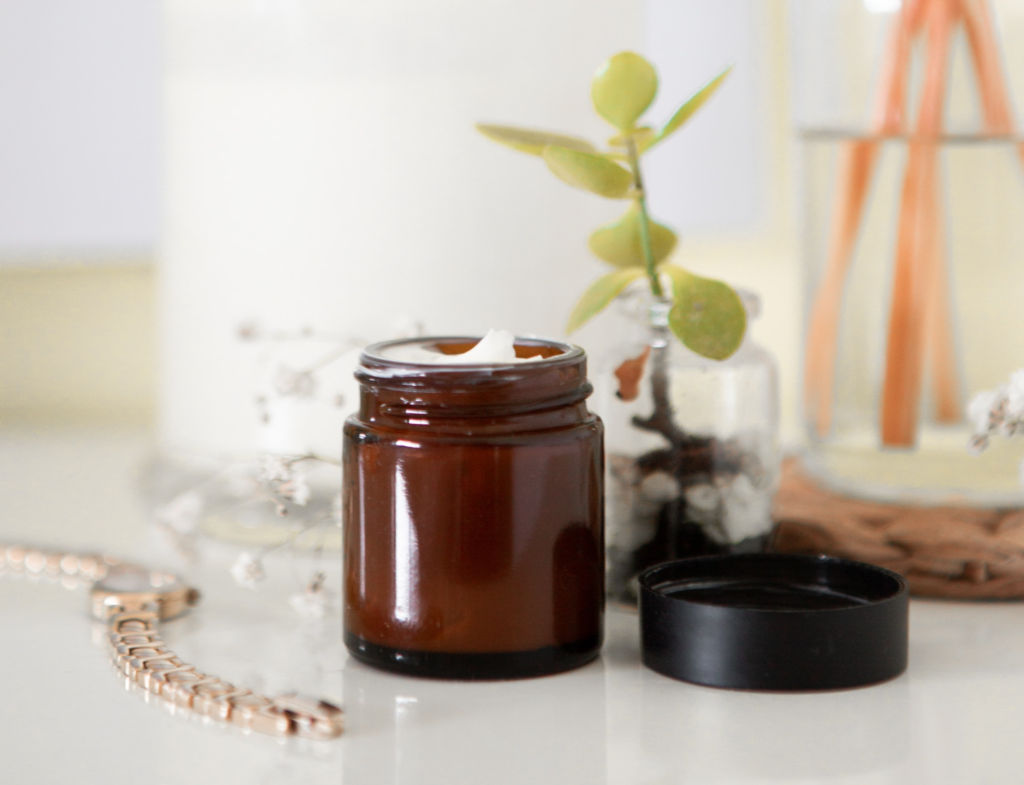
Refillable or Compostable Deodorant
The deodorant industry is worth 22 billion globally and produces 15 million pounds of plastic waste per year. But some deodorant brands have started moving away from plastic waste, offering refillable, recyclable or compostable options instead. Deodorant pastes or sprays let you transfer a smaller, travel size amount to another container much easier than a roller ball or aerosol sprays.
- Really Great Goods Deodorant Paste
- Bare Nature Compostable Deodorant

Tote Bags
Avoid adding to our pile of 160,000 plastic bags a second and bring a reusable tote bag with you on your travels. Most grocery bags are only used for about 12 minutes but they can last up to 1000 years floating around the environment. Not exactly the nicest gift to leave your host country when you’re traveling around. Tote bags come in so handy too. They’re great for groceries obviously but can also double as a casual day bag, beach bag and dirty clothes hamper. Pack a few, roll them up small and save some plastic from contaminating the planet.
- abetweene DIY Tote Bag Tutorial
- The Market Bags Tote and Grocery Bags
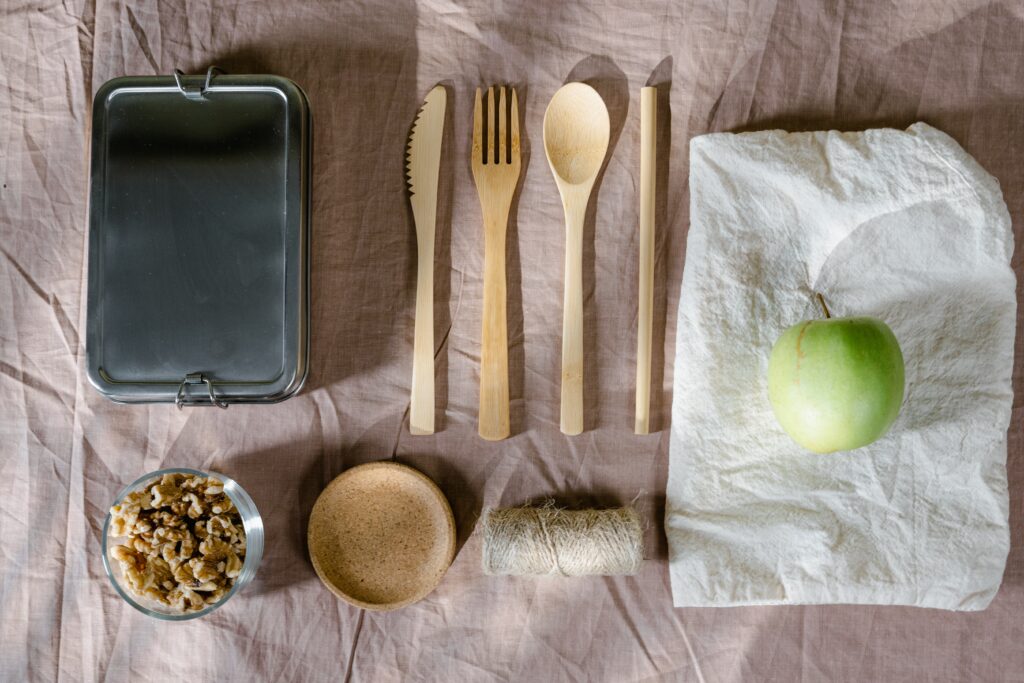
Containers
If you’re like me and you like a snack, traveling with a container for said snack is a must. Of course when you’re in a pinch a few napkins will always do (ideally reusable cloth napkins), but nothing really beats a container with a lid to keep your precious hangry antidote safe. They’re great for packing leftovers from lunch if you’re out and about or keeping travel utensils clean on the move. Some food trucks even encourage bringing your own container to avoid using a single-use plastic. Considering a recent study shows that food packaging contains forever chemicals, per- and polyfluoroalkyl substances (PFAS), avoiding single-use containers is good for your health as well as the planet.
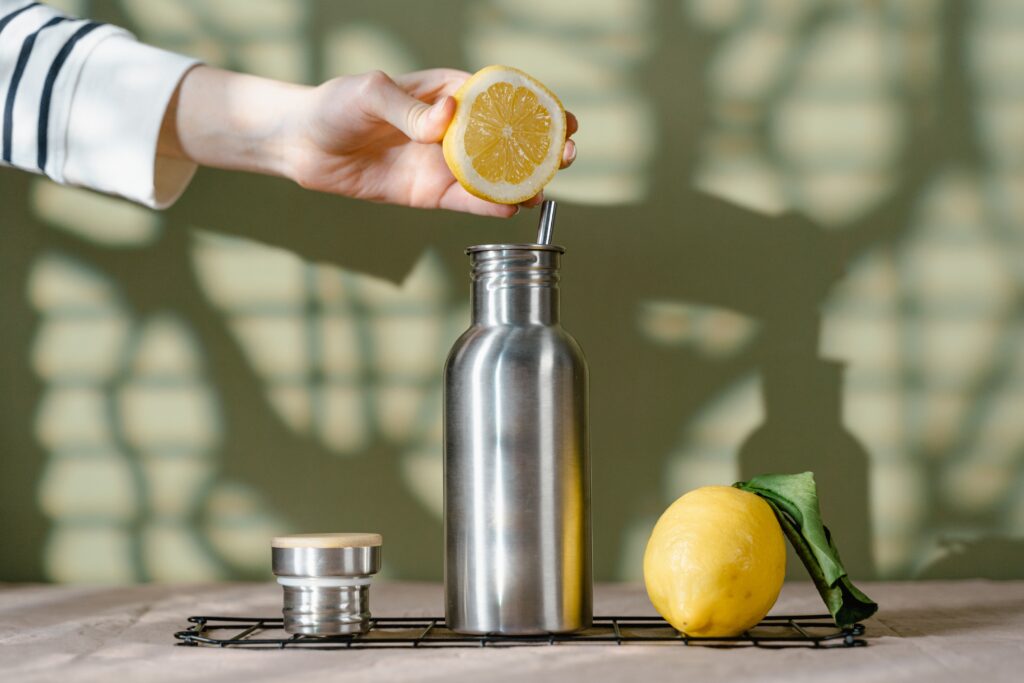
Reusable Water Bottle/Coffee Mug
Liquids, especially water, are important when you travel. Honestly, coffee can be equally as important, but for different reasons. It’s recommended that you drink at least half a liter of water per hour when doing moderate activity, like hiking or walking around a new city. With all that moving around, that’s a lot of plastic water bottles to potentially go through to stay hydrated. Globally we go through 1 million plastic bottles every minute, Canadians alone consume 2 billion every year. Avoid adding to our plastic bottle pile and bring your own reusable water bottle wherever you go instead.
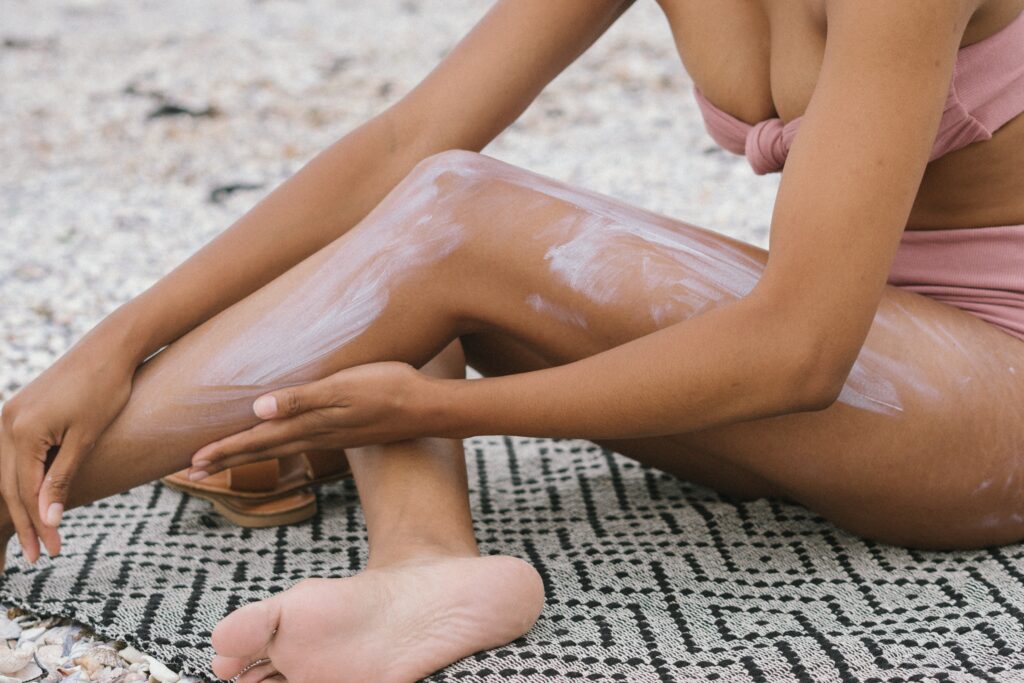
Reef-Safe SPF
According to experts, the safest sun protection for marine life is no sun cream at all and using clothing like hats and long sleeves instead. And while that can work for some occasions, for others you’re going to need sun cream. The key to keeping SPF reef-friendly is in the ingredients list. Active ingredients like zinc oxide and titanium dioxide are reef safe, as opposed to oxybenzone and octinoxate, found in many sun creams. Some states and nations have even started to ban the use of sun creams containing these harmful chemicals. Make sure to pack SPF that won’t hurt our marine life and potentially break laws on your travels.
Sustayn is designed to present the most useful recommendations for environmentally friendly approaches and items. We update links when possible, but note that links can be broken and subject to change.








